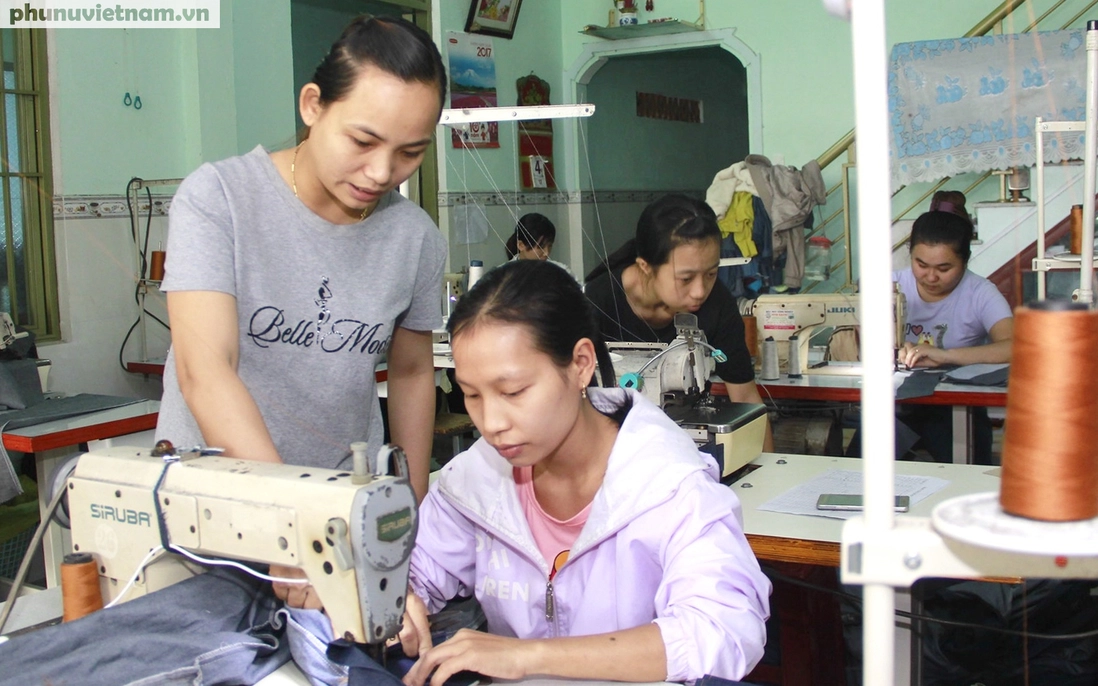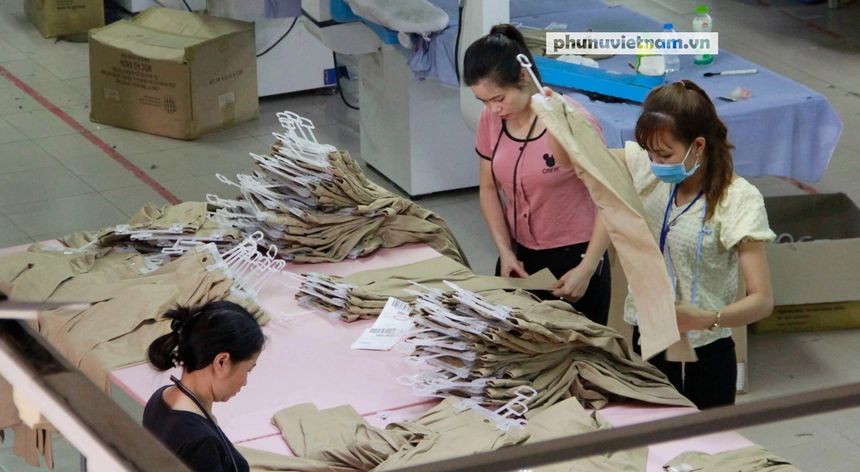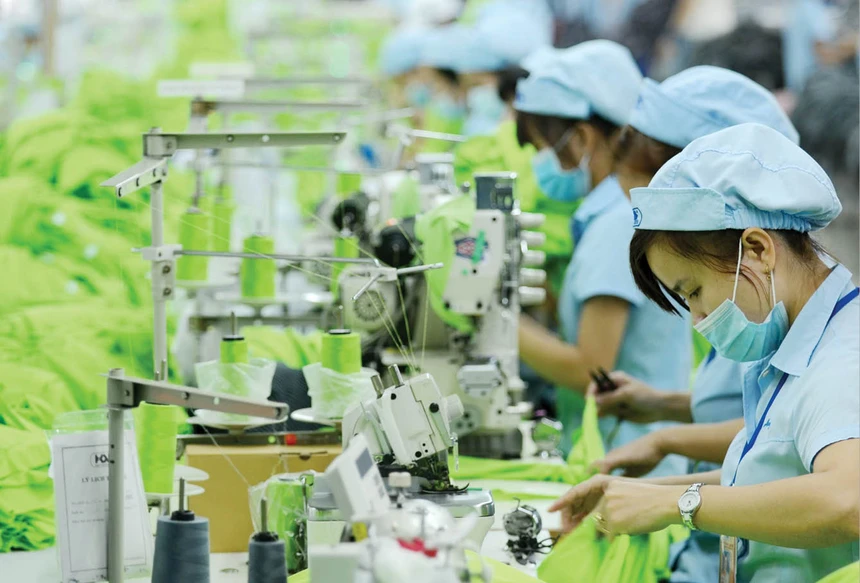Textile and Garment Workers’ Wages Increase but are not Sustainable

Vietnam’s textile and garment industry will reach the 2024 target with a turnover of 44 billion USD, an increase of 11%. Thanks to this momentum, wages for garment workers, mostly female workers, are better compared to previous years.
Scarcity of labour in the textile industry at the end of the year
At a recent summary conference, Mr Cao Huu Hieu, General Director of Vietnam Textile and Garment Group (Vinatex), said, “With a turnover of 44 billion USD in 2024, an increase of 11% compared to 2023, Vietnam ranks the second in the world in textile and garment exports, after China and surpassing Bangladesh.”
According to forecasts, following the market’s improvement over the past year, this time of the upcoming Lunar New Year, many businesses have received new orders until the end of the first quarter of 2025, and a few businesses have orders until April and May 2025.
However, according to Mr Cao Huu Hieu, last year, the textile and garment industry faced major fluctuations in labour; some units in the group had fluctuations of up to 20% and “labour fluctuations and shortages are forecasted to continue in 2025 in both the textile and yarn industries.” According to Mr Hieu, the reason is that a number of textile and garment workers have chosen to go abroad to work for higher wages. At the same time, the industry’s main export markets, the US and EU, are recovering, creating better export prospects for the industry in the first half of 2025.
The labour shortage in the garment industry is happening not only in large enterprises and corporations but also in private enterprises, production factories, and small garment factories that are struggling with the problem of hiring labour at the end of the year. Ms Dong Thi Quynh, in charge of recruitment at MU Vietnam Co., Ltd. (in Nam Sach district, Hai Duong), said, “The company urgently needs to recruit 300 sewing workers, 10 assistant workers, and 5 sewing team leaders.” However, the recruitment notice has been posted in front of the industrial park for a month now but has not yet received enough people. With the current “thirst” for labour, Ms Quynh has to post her recruitments on social networking sites in order to have enough workers for the rest of the year.
For small production facilities, Ms Thu Hong, owner of a garment factory on Nguyen Trai Street (Thanh Xuan District, Hanoi), said that for the past month, the factory wanted to recruit 40 more people without setting strict recruitment requirements. They even reduced the criteria, such as the position of a 1-needle seamstress, knowing how to sew overlock, and only needing to be over 18 years old, even workers up to 60 years old are accepted. Wages are based on products, on average 10 million VND/month, with lunch and dinner allowances. For the position of sewing assistant, there is no age limit, no experience required, and a fixed salary of 200,000 VND/day, but there are still not enough people to take the job.

Need to aim for sustainable wage increases for workers
After 9 years of working, Ms Le Thi Xuan, a garment worker at MAKL Garment Company (in Vinh City, Nghe An), said she was happy this year when she received the highest income in July 2024 with 17.7 million VND/month. Here, the average income of garment workers is about 10 million VND/month. Ms. Xuan shared that this is a dream salary for many workers and herself. In previous years, the salary per product was not high. This year, the company had more orders, and she took advantage of her youth and strength, so she continuously accepted overtime. Ms Xuan shared, “Such a salary is worth the effort I put in”, and she felt much happier when thinking that during Tet, she would have more money to give to her parents, lucky money for her children and some money to pay for her children’s school fees.
However, according to Ms Xuan, the most worrying thing for most workers is that the cost of living in the city is expensive; everything is very expensive, especially the cost of renting a house, and the cost of food is also higher than in previous years, so the amount of money saved is not much.
According to the 2023-2024 Vietnam Consumption Survey and the 2024 Living Wage Announcement by the Asia Floor Wage Alliance (AFWA), the Vietnamese garment industry employs more than 2.7 million people. Female workers account for the majority of the garment industry, with more than 4/5 of the survey participants accounting for 90% being female workers.
Income of garment workers in the survey: 50% of households participating in the survey have an income of less than 10 million VND/month, and about 29% of households have 5 – 10 million VND/month (usually from families with 2 working people). There are also many households with only one working person with an income. The average income of each family is 250,000 VND/day for one working person and about 600,000 VND/day for families with two working people. The average income of this family is low. Other figures show that a household’s income of 11 million VND/month is considered low when including overtime and allowances.
About 33% of workers surveyed said they earned less than VND 4 million per month. The average income of workers is VND 6 million per month. This income usually includes overtime allowances and production performance bonuses. According to AFWA, this shows that the base salary (the salary used to calculate social insurance premiums) that workers are paid is lower than VND 6 million. This salary is low because Vietnam’s current regional minimum wage is still low. According to AFWA’s calculations, “the living wage for garment workers in 2024 in Asia needs to reach about VND 12.4 million/person/month”.

Thus, there is still a relatively large gap between the current wage and the living wage, according to AFWA. A living wage not only meets basic needs such as food, housing, and clothing but also helps them have a better life, be respected and have the opportunity to develop themselves and their families. According to experts, the wage increase for workers in the Vietnamese textile and garment industry in 2024 is a positive sign, helping the lives of workers, especially female workers in this industry, so that they can spend more on their families and themselves.
However, this wage level will only increase in the second half of 2024 due to more orders and overtime than before. In reality, this income level is not really sustainable. Overtime to increase income fluctuates depending on the export market. On the other hand, the regional minimum wage is still very low and far from meeting the full living standards of workers.
This article has been translated from its original source in Phunu Vietnam: Lương của lao động ngành dệt may tăng nhưng chưa bền vững
